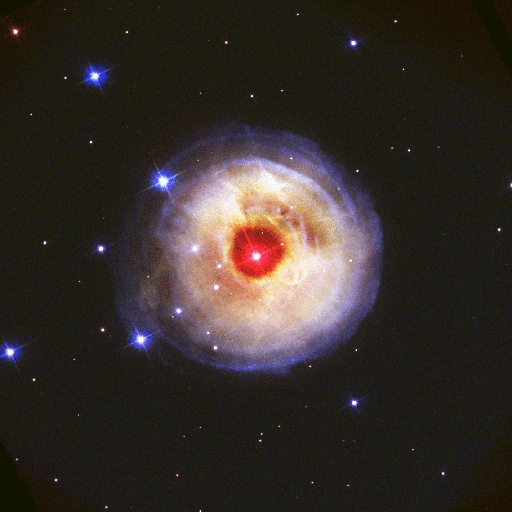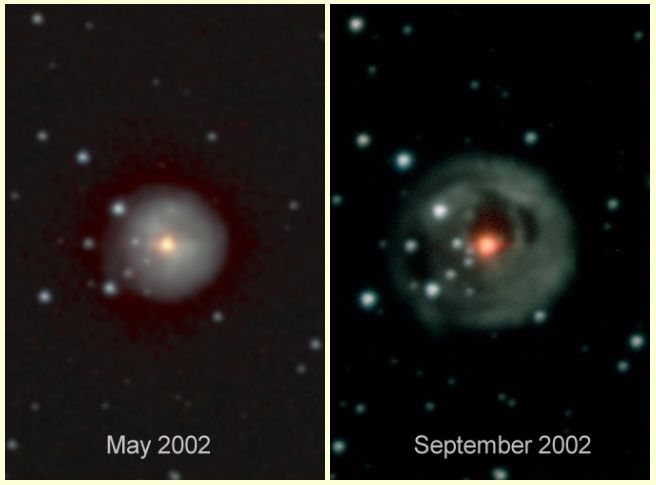This is because Sirius is a binary star. Its companion, whimsically called "The Pup", is a white dwarf star of apparent magnitude 8.5. It is nearly lost in Sirius' glare.
Below is a Chandra x ray image of Sirius and the Pup.

Back in ancient times, the white dwarf may have still been a red giant (This still seems to be a very short timeline, of course).
The red giant spilled material that Sirius captured and added to its bulk. Now Sirius is a bright white "A" type star.
Excerpt from Burnham's Celestial Handbook, Volume One:
In ancient times, the color of Sirius was often referred to as red, reddish, or ruddy, and the star was sometimes calley Bloody, and referred to as Blazing like fire. (Although blazing may have simply been a reference to its brightness). Was Sirius red in ancient times? Did its color change over the last several thousand years? This is yet another mystery associated with the brightest of stars, Sirius. In The Iliad, Homer referres to Sirius gleaming like Achilles' copper shield. Earlier, the Babylonians referred to Sirius as Kak-si-di, which meant "shining like copper." Granted both writings were done during the bronze age, when copper was the commonly used metal, and so would have perhaps been a common metaphor for something shiny or brilliant. However, both the Greek writer Aratus, and the Roman poet and writer Cicero referred to Sirius' color as "ruddy." Seneca, Nero's tutor, stated that Sirius was "redder than Mars" and compared it to Jupiter which he states is not at all red, (Mars is quite reddish, while Jupiter has a distinct yellowish tint to the naked eye.) Another clue is the fact that in the days of ancient Rome, "ruddy dogs" were sacrificed to the "Dog Star", Sirius; (ruddy dogs, and dog star seem to indicate some connection with color). Even more telling is a statement by Ptolemy, one of the greatest natural scientists and geographers of Roman history, who compares Sirius with Betelgeuse and Antares, two indisputably red colored stars, (and red giants), as all being fiery red.
Today, we know Sirius as a type A1 main sequence star with a surface temperature of about 10,000 K and a luminosity of about 23 times our Sun. Our Sun on the other hand, has a surface temperature of about 6000 K, and is a typical yellow main sequence star. Sirius is a brilliant white to very slightly bluish. It seems highly unlikely that Sirius could have undergone enough stellar evolution in 2000 years to increase its color. Also such a color shift (from red to yellow to white to blue) would indicate an increase in temperature and gas contraction over this time, rather than a decrease in temperature and expansion of gas which would be the customary evolutionary route.
In 1862, it was discovered that Sirius was actually a double star, the larger, brighter counterpart being Sirius A, and the smaller dimmer companion being Sirius B, interestingly a white dwarf star. The two stars are seperated by only about 11 arc seconds at maximum seperation (the orbital period is just under 50 years). Fainter Sirius B has a magnitude of only about 8.7 while Sirius A has a relative magnitude of nearly -1.5. It has been suggested that the color shift of Sirius, as indicated by the ancients above, could have been the result of the eveloution of Sirius B, which may have gone from a much brighter red giant to a white dwarf. This is a typical chain of events in stellar evolution, but such a change is unlikely over so short a time. (It is thought, that the process would take at least 10 to 20 times longer than the indicated 2000 or so years.) Lastly, Sirius B is the nearest and brightest white dwarf that we know of, only about 8.7 light years distant. Such a "flare out," if it occurred would certainly have been observed from Earth, and would also have been bright enough to have significantly effected the overall brightness and color of Sirius.

